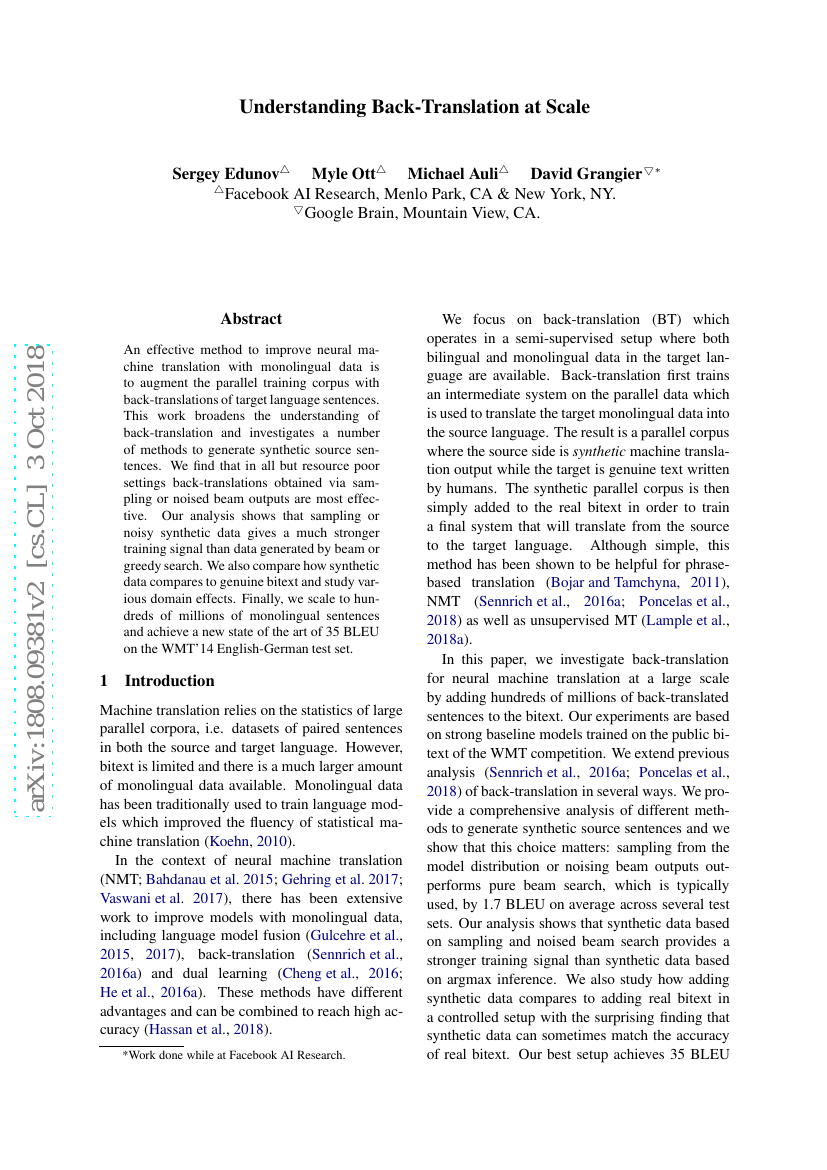Command Palette
Search for a command to run...
Sergey Edunov; Myle Ott; Michael Auli; David Grangier

Abstract
An effective method to improve neural machine translation with monolingual data is to augment the parallel training corpus with back-translations of target language sentences. This work broadens the understanding of back-translation and investigates a number of methods to generate synthetic source sentences. We find that in all but resource poor settings back-translations obtained via sampling or noised beam outputs are most effective. Our analysis shows that sampling or noisy synthetic data gives a much stronger training signal than data generated by beam or greedy search. We also compare how synthetic data compares to genuine bitext and study various domain effects. Finally, we scale to hundreds of millions of monolingual sentences and achieve a new state of the art of 35 BLEU on the WMT'14 English-German test set.
Code Repositories
Benchmarks
| Benchmark | Methodology | Metrics |
|---|---|---|
| machine-translation-on-wmt2014-english-french | Noisy back-translation | BLEU score: 45.6 Hardware Burden: 180G Operations per network pass: SacreBLEU: 43.8 |
| machine-translation-on-wmt2014-english-german | Noisy back-translation | BLEU score: 35.0 Hardware Burden: 146G Operations per network pass: SacreBLEU: 33.8 |
Build AI with AI
From idea to launch — accelerate your AI development with free AI co-coding, out-of-the-box environment and best price of GPUs.